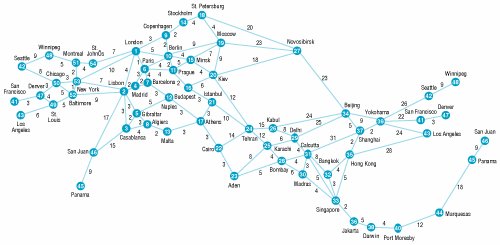Case Problem
| A ROUND THE W ORLD IN 80 D AYS In the novel Around the World in 80 Days by Jules Verne, Phileas T. Fogg wagered four of his fellow members of the Reform Club in London & pound ;5,000 apiece that he could travel around the world in 80 days. This would have been an astounding feat in 1872, the year in which the novel is set. Then, the fastest modes of travel were rail and ship; however, much of the world still traveled by coach, wagon, horse, elephant, or donkey, or on foot . Phileas Fogg was not a frivolous man. He would not have undertaken such a large wager if he had not carefully researched the feasibility of such a trip and been confident of his chances . Although he undoubtedly analyzed various routes to circumnavigate the globe, he did not have knowledge of techniques such as the shortest route method, nor did he have a computer to help him select an optimal route. If he had, he might have chosen a route that would have completed his trip in less than 80 days or possibly would not have been so quick to make his wager. On the next page is a network of the various routes of the day for traveling around the world from London. Fogg traveled eastward. The travel time, in days, is shown on each branch. Travel times are based as much on available modes of transportation at the time as on distance. Using the shortest route method (and the computer), select the best route for Mr. Fogg. Would the route you determined have won him his wager?  |
EAN: 2147483647
Pages: 358